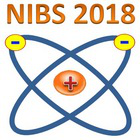Conveners
8th Session
- Jacques lettry (CERN)
Dr
Keerthi Jayamanna
(TRIUMF)
05/09/2018, 11:00
H– and D– sources for fusion, accelerators and other applications
Oral
TRIUMF has developed H- ion sources for decades and now they are being employed in machines such as the 500MeV, TR30, TR13 at TRIUMF as well as various other machines worldwide. A high current version can produce up to 60 mA of H- beam. A new H- ion source with a small plasma volume is being developed to produce 5 mA at a very low emittance and run years without changing the filament. Due to...
Mr
David Potkins
(D-Pace Inc)
, Dr
Morgan Dehnel
(D-Pace Inc)
05/09/2018, 11:30
H– and D– sources for fusion, accelerators and other applications
Oral
The Siemens Eclipse (RDS111) cyclotron utilizes an internal Penning Ion Gauge (PIG) ion source to provide the negative hydrogen ions for this 11 MeV PET cyclotron. Siemens worked with D-Pace Inc. to optimize the ion source current and transmission through the cyclotron to the radioisotope targets. The goal was to increase the target current from 120µA (dual 60µA) to 150µA (dual 75µA) and to...
Dr
Andrey Sanin
(Budker Institute of Nuclear Physics)
05/09/2018, 12:00
H– and D– sources for fusion, accelerators and other applications
Oral
A continuous-wave surface-plasma negative hydrogen ion source is used at 2 MeV tandem accelerator with vacuum insulation at the Budker Institute of nuclear physics since 2006 [1]. The source uses the hydrogen-cesium Penning discharge with plasma injection from hollow cathodes, and negative hydrogen ion production due to interaction of plasma particles with anode electrode surface [2]. It...

